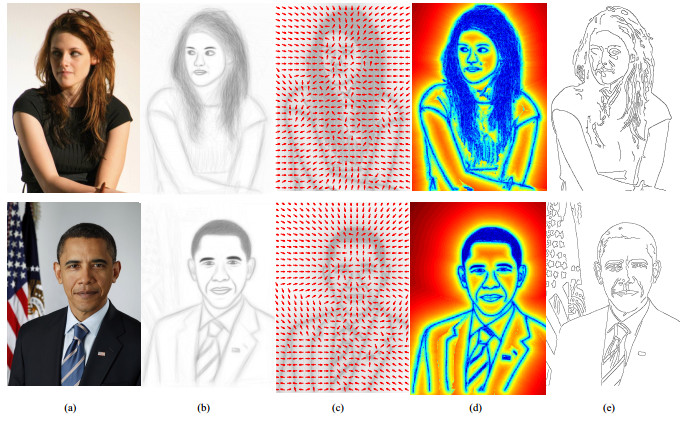Real-time drawing assistance through crowdsourcing
July 24, 2013

DrawAFriend users draw one of six celebrities (a). We use our database of hundreds of drawings per subject – shown averaged in (b) – to precompute a correction vector field (c) enabling real-time drawing assistance on the iPhone. The magnitude of our vector field (d) reveals a consensus of artistic renderings strikingly different than what we could compute with automated methods, such as a canny edge detector (e). (Credit: Alex Limpaecher, Nicolas Feltman, Adrien Treuille, and Michael Cohen)
Researchers from Carnegie Mellon and Microsoft Research have proposed a new method for the large-scale collection and analysis of drawings by using a mobile game specifically designed to collect such data.
Analyzing this crowdsourced drawing database, the researchers build a spatially varying model of artistic consensus at the stroke level. They then present a surprisingly simple stroke-correction method which uses their artistic consensus model to improve strokes in real-time.
Importantly, the auto-corrections run interactively and appear nearly invisible to the user while seamlessly preserving artistic intent. Closing the loop, the game itself serves as a platform for large-scale evaluation of the effectiveness of the researchers’ stroke-correction algorithm.

